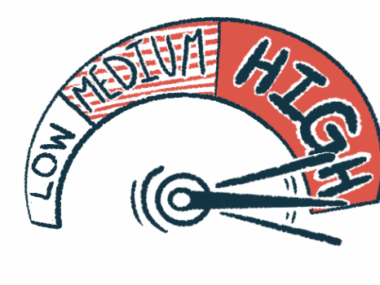Blood marker for inflammation may predict AAV disease activity
51 adults in study with granulomatosis with polyangiitis, microscopic polyangiitis
Written by |

A blood marker, called C-reactive protein to albumin ratio (CAR), may predict and help monitor disease activity in people with ANCA-associated vasculitis (AAV), according to a small study in Turkey.
This is important in clinical practice because “close monitoring, early recognition, and timely treatment of disease activity may limit patient morbidity and mortality,” the researchers wrote in “C-Reactive Protein to Albumin Ratio is Associated with Disease Activity in Anti-Neutrophil Cytoplasmic Antibody Associated Vasculitis,” which was published in the Mediterranean Journal of Rheumatology.
In AAV, the immune system attacks healthy blood vessels, causing them to become inflamed and damaged. Its symptoms vary depending on where inflammation and damage occurs.
During periods of active disease, people with AAV may have a fever, skin rashes, blurred vision, wheezing and difficulty breathing, fatigue, and other symptoms. This can be scored using a system such as the Birmingham vasculitis activity score (BVAS).
Using a blood marker, however, could help accurately track disease activity over time. C-reactive protein, which the liver releases into the bloodstream in response to inflammation, is often used as a blood marker in AAV. Albumin, another protein made by the liver, circulates at low levels when there is liver or kidney disease or another type of damage. It’s linked to poor prognosis in AAV.
Monitoring ANCA-associated vasculitis disease activity
CAR, calculated by the levels of C-reactive protein divided by albumin, is an independent predictor of death from any cause in people with newly diagnosed AAV. The researchers wanted to see if it could help predict disease activity and damage as part of a study that included 51 adults (26 women, 25 men) with either of two types of AAV — 32 had granulomatosis with polyangiitis and 19 had microscopic polyangiitis. Their median age was 55 and the median disease duration was 34 months.
The participants’ median BVAS score was 3, and 20 (39.2%) had a BVAS score that was equal to or greater than 5. Their median Vasculitis Damage Index (VDI), a measure of damage, was 2.
Mean CAR was almost three times higher in the patients than in 42 healthy people who served as controls (1.9 vs. 0.7). Almost half (49%) of patients had a CAR that was equal to or greater than 0.98.
When the researchers used this cutoff of 0.98, CAR could predict high BVAS with a sensitivity of 70% and a specificity of 68%. Sensitivity refers to how well the test can predict high BVAS in those who have it, whereas specificity refers to the proportion who test negative among those who don’t have a high BVAS.
Patients who had a CAR equal to or greater than 0.98 had a higher median BVAS score (5 vs. 2) and a higher median VDI score (4 vs. 2) than those with a CAR below the cutoff. The proportion of patients with a high BVAS also was higher (64% vs. 15.4%).
Moreover, the BVAS score was an independent predictor of a CAR equal to or greater than 0.98. These findings suggest that by looking at CAR, doctors may be able to assess disease activity and track its progression.
“CAR was significantly associated with disease activity in AAV patients and can be used to monitor disease activity,” the researchers said, adding the relatively small number of participants and the lack of follow-up data were limitations of the study.






